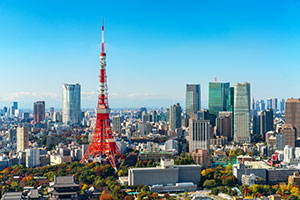Kyoto
If you can visit only one city in Japan, Kyoto is the one. This ancient city, 30 mi/50 km northeast of Osaka, was the capital of Japan for more than 1,000 years and still is considered the country's spiritual capital. Thousands of shrines and temples dot the city, including more than a dozen on the UNESCO World Heritage list. That list is far from all-inclusive, and many excellent places that might be the star attractions of other cities crowd the streets of Kyoto. It is a center of Japanese Zen and has several huge monastery complexes where serious students still sit in meditation.
Kyoto is also the nation's capital of traditional arts. Whether your interest be in pottery, textiles, dance, the tea ceremony or any of the other innumerable arts, Kyoto has excellent galleries, museums, shops and tea houses. Japanese people from the countryside and foreign students flock there to learn under the great masters. Much of what is considered Japanese haute cuisine was developed there too, as an offshoot of the tea ceremony.
Kyoto is Japan's heartland of history. With 1,300 years of tumultuous existence, the city's past intrudes upon the present day as in few other Japanese cities. In Gion, you can spot a geisha (or geiko, as they are called in Kyoto), one of the last hundred or so in Japan, slipping down a side-street to entertain rich guests with witty conversation, dance or music. A shopping arcade may suddenly fill with discordant clanging music as a shrine festival passes among the shoppers, or you may hear the long chant as Zen monks pass through the neighborhood, calling for alms.
Kyoto is an understated city that might disappoint visitors at first (at first glance, it is a large city with modern buildings that might not align with one's original perception); its charm lies in small details, pocket gardens, tiny traditional restaurants and refined artwork.






